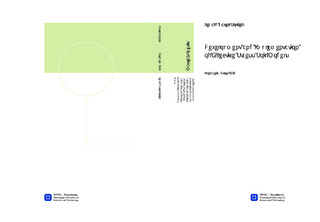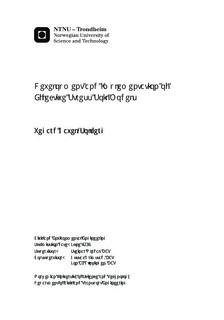| dc.description.abstract | Soil exhibit complex behavior that require advanced models to recreate stiffness and strength during loading. The complex behavior may be due to preconsolidation, dilation and contraction, softening, anisotropy, stress dependency or other effects.Today, an effective stress based soil model for soft Scandinavian clays is being developed at NTNU, as part of the ongoing research project GeoFuture. The goal of this thesis is to implement and develop an effective stress based soil model, applying the concept of modular programming used in the GeoFuture project.The soil model was implemented using Fortran and MATLAB code for application in PLAXIS. Modular programming was used to separate the implemented code into two material independent codes and one material dependent code. For development of the model, only the material dependent code needs to be modified.A simple linear elastic-perfect plastic Drucker--Prager model was implemented at first. Simulations in PLAXIS were performed, using the implemented model and the Mohr--Coulomb model in PLAXIS to compare the behavior. For simulation of triaxial compression and extension tests, the models gave the same behavior. In plane strain conditions, the implemented model gave a softer response close to failure. The same strength is obtained for the two models, yet greater deformations arise before failure in the Drucker--Prager model.Applying the advantage of modular programming, the model was further developed to include strain hardening and stress dependent dilatancy. Two formulations of stress dependent dilatancy were used to reproduce behavior of sand in undrained conditions. Simulations of undrained triaxial tests using the model were performed, showing that only one formulation gave the intended behavior.The stress dependent dilatancy was finally related to a critical void ratio for a critical state. Using both constant and mean stress dependent elastic stiffnesses, undrained triaxial compression tests on Toyoura sand were simulated. Simulations gave a good fit between the test results and the simulations. The mean stress dependent stiffness gave superior simulations compared to the constant stiffness.During the development of the model, continuous testing has been executed. The concept of modular programming has shown to perform well. After establishing the first framework with material dependent and independent routines, including new features, or even changing constitutive model, is a manageable and convenient task. The concept yields a good tool for implementing and developing constitutive models of soils.As the strength of the implemented model must be correlated manually to the relevant stress state, further development of the model should include a Lode angle dependency of the strength. Mobilization dependent dilatancy is not included and would improve the performance. A more complete evaluation of material properties from laboratory tests with subsequent simulations would be of great interest to indicate the predictive capacity of the model. | nb_NO |

